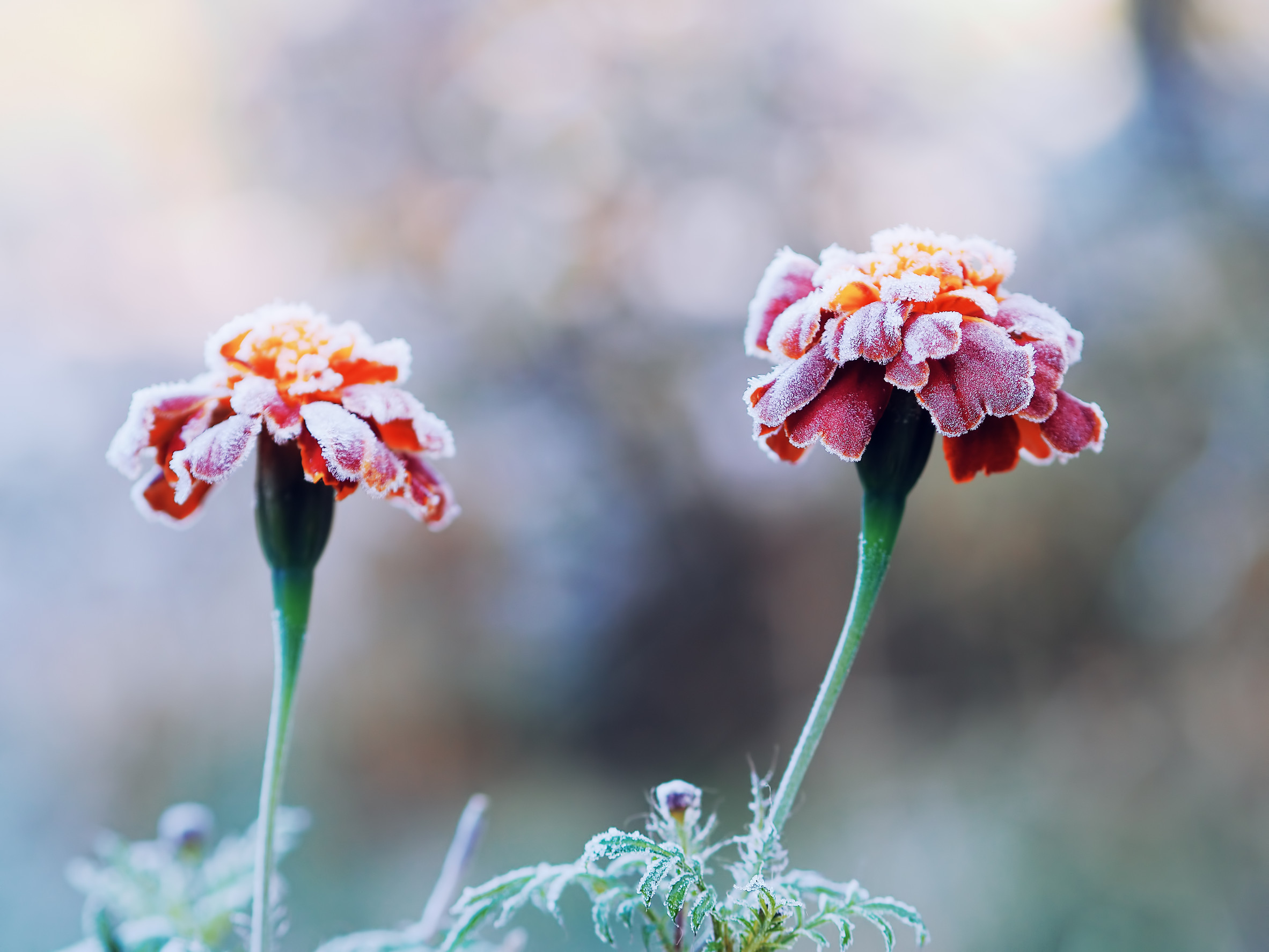
Image Source: 123rf.com
You’ve babied those tender perennials all season—watering just enough, fertilizing with care, and proudly admiring the blooms like they’re your own leafy children. Then, bam! The weather app drops a frost warning out of nowhere, and your heart skips a beat. Nothing sends gardeners into panic mode faster than the words “sudden frost.”
But don’t worry—your plants don’t have to meet an icy demise. With a little preparation, creativity, and quick action, you can shield your tender perennials and keep them thriving long after Jack Frost tries to sneak in.
Know Your Frost Warning Signs
The first step in protecting perennials is spotting the danger before it hits. A frost can occur even when the forecast predicts temperatures just above freezing, especially on clear, still nights. If your weather app warns of “patchy frost,” that means vulnerable plants are at risk. Tender perennials like begonias, coleus, or fuchsias can get damaged at temperatures others might shrug off. Keep an eye out for sudden drops in temperature and trust your local frost alerts—they’re your first line of defense.
Move Portable Plants Indoors
If your tender perennials live in pots, congratulations—you’ve got options. On nights when frost looms, simply whisk them indoors to a garage, shed, or even a cozy kitchen corner. The goal is to keep them out of the cold air, even if it’s just overnight. Just remember to place them near windows or under grow lights if they’ll be inside for more than a day. This quick shuffle can be the difference between lush greenery and frostbitten foliage.
Use Covers for Garden-Bound Beauties
Not all perennials can be hauled indoors, so this is where frost covers come in handy. You can use anything from purpose-made frost cloths to old bed sheets, burlap, or even cardboard boxes. The idea is to trap heat from the soil and prevent frost from settling directly on leaves. Drape your material loosely over the plants, making sure it reaches the ground for maximum protection. In the morning, remove the covers once temperatures rise—plants don’t want to sunbathe under a bedsheet all day.
Water Before the Frost Hits
It sounds counterintuitive, but a well-watered garden stands up to frost better than a dry one. Moist soil retains heat longer, releasing it slowly through the night to keep roots a little warmer. By watering during the day before a frost, you create a mini heat reservoir. Just avoid overwatering, which could cause soggy roots and other problems. Think of it as giving your plants a thermal water bottle before tucking them in.
Add Mulch for Extra Warmth
Mulch isn’t just about keeping weeds down—it’s also an excellent insulator. By spreading a thick layer of straw, leaves, or bark around the base of your tender perennials, you’re protecting their roots from temperature swings. During a frost, the mulch acts like a warm blanket, trapping heat in the soil. This technique works especially well for perennials that can bounce back from root survival, even if foliage gets nipped. A simple mulching session today could mean happy, thriving plants tomorrow.

Image Source: 123rf.com
Leverage Heat and Light Tricks
If you’re facing a particularly nasty cold snap, it’s time to get creative. Place Christmas lights (the old-fashioned incandescent kind, not LEDs) around your perennials for a gentle, warming glow. Gardeners have also been known to set up small space heaters or heat lamps—but be careful and safe with placement. Even simple tricks, like moving a plant closer to a brick wall that radiates stored daytime heat, can help. Sometimes it’s the smallest adjustments that make the biggest difference against frost.
Don’t Forget to Prune Smartly
It’s tempting to cut back tender perennials before frost season, but resist the urge. Extra foliage can act as insulation, protecting stems and crowns from damage. If frost does bite, the affected leaves can be removed later, sparing the plant’s core. Pruning too early leaves the plant vulnerable to cold air and moisture loss. Think of it as letting your perennials keep their winter coats until springtime.
Outsmarting Frost, One Plant at a Time
Sudden frosts don’t have to spell doom for your tender perennials. With a mix of preparation, quick action, and a dash of ingenuity, you can outsmart chilly nights and keep your garden flourishing. From moving pots indoors to using blankets, mulch, or even holiday lights, every effort counts when it comes to plant protection. Gardening is about adapting, after all, and frost season is just another challenge to rise to.
Have you faced a surprise frost before? Share your clever plant-saving hacks, stories, or questions in the comments.
You May Also Like…
Top 13 Benefits of Using Rice Hulls in Gardening
Use These 8 Winter Composting Tips for Gardeners
DIY Winter Gardening Projects: How to Make the Most of Your Garden This Season
7 Low-Maintenance Flowers That Thrive With Little Water
How to Pick the Perfect Flowers for Valentine’s Day Without Breaking the Bank
Leave a Reply